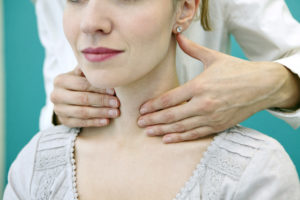What is it?
Endometrial ablation is a procedure, not a surgery, that removes the lining of the uterus to reduce or stop menstrual flow completely. Most types of endometrial ablation take place in your doctor’s office, using topical anesthesia. Some types of endometrial ablation may require total anesthesia, in which case they are performed in the hospital. It does not require an incision to be made, as your healthcare provider inserts small tools through your vagina to reach your uterine lining.
There are different methods for this, some of which include:
- Use of an electric current that travels through a wire loop
- Heated fluids that are pumped into the uterus to destroy the lining
- Radio waves, which are sent into the uterus through an electrical mesh your provider expands
- Application of very cold temperature using a probe to freeze the lining
- Microwaves sent in the uterus through a thin probe
Why is it done and who needs it?
The main reason for endometrial ablation is experiencing excessive blood loss during menstruation—to the extent where you need to change your tampon or pad every hour. Another reason can be abnormally long periods that last more than eight days or experiencing bleeding in between periods.
Typically, when your menstrual bleeding needs to be reduced doctors will usually either prescribe medications or an IUD. If these options don’t have the expected results, endometrial ablation is considered as an option.
Risks
Although complications in endometrial ablation procedures are rare, they may include pain, bleeding, or even infection. Possible injuries to nearby organs are also possible, either because of the hear or cold used, or because of the surgical instruments.
Another possible complication is a higher risk pregnancy. Even though pregnancies can occur if you have undergone endometrial ablation, you want to closely monitor your pregnancy, especially as it may lead to an ectopic pregnancy or even miscarriage.
In Preparation
It cannot be performed if you are pregnant or if you have IUD in place. Perhaps more rare but significant is that you will be tested for cancer through a small sample of your endometrium.
The endometrial ablation works best if the uterine lining is thin, so you might either be prescribed medication for that, or your doctor might perform a procedure where they scrape off the extra tissue—known as dilation and curettage.
Particularly important is to discuss anesthesia options with your doctor beforehand, as some methods require general anesthesia, while others can be performed with sedation or numbing shots.
After the Procedure
The results of the procedure may take a few months to become visible, and they differ among women: some may experience lighter periods, while others may notice their period stopping completely.
You may experience different reactions right after the procedure, which include menstrual-like cramps that can be soothed with over-the-counter medication, vaginal discharge that will most likely be present the first few days after the procedure, as well as frequent urination within the first 24 hours.
More
With most folks working and sheltering at home due to the onset of covid-19, many parents are looking for ideas to keep the kids busy. While limiting screen time hardly seems like a fight worth going to battle over right now (let’s face it, all parents need some quiet time), this list was designed to find hobbies to occupy your kids!
More

With many women opting for careers and stable relationships before starting a family, the average maternal age of first time mothers is on the rise. In fact, according to the CDC, around 9% of new mothers are over 35 years old. While the odds of conceiving drop with age, it’s still very possible to have children past 35.
Advanced maternal age generally refers to women 35 and older. Essentially women over 35 will face more risks and complications, including the following.
- Time to conceive: Because egg quality and quantity decreases with age, it often takes six to 12 months for women of advanced maternal age to get pregnant.
- Multiple pregnancy: Due to hormonal changes for older women, the body is more likely to release multiple eggs, leading to twins.
- Pregnancy conditions: In addition to issues conceiving, pregnancies risks include high blood pressure and gestational diabetes. Both conditions can lead to complications during pregnancy and during delivery, if left untreated.
- Chromosome abnormalities: Women over 35 will have a higher risk of chromosome issues such as Down syndrome.
- Pregnancy loss: The risks of miscarriages and stillbirths also increase for mothers with age. All of the above issues (egg quality, chromosome abnormalities, high blood pressure, and diabetes) can increase the risk of miscarriage.
While all of these risks are real and possible, many women have safe and healthy pregnancies after 35. The first step is always going to be diet and exercise. Get your diet in check with a focus on fruits, vegetables, lean protein, and whole grains. Aim to eat clean as much as possible, which refers to eating actual ingredients rather than pre-made foods. Find some quick and easy recipes that use real ingredients.
Exercise is also so important. Get moving! Almost anyone can take a 30-minute walk per day. It’s easy and available to most people’s current health condition. Walking is the most basic way to get moving, as it eliminates any excuse to skip exercising that day. Other ways to get in shape include swimming, aerobics, yoga, cycling, and circuit training. If you are new to working out, start by walking and work up from there.
It’s also imperative to severely limit or avoid alcohol and tobacco when preparing to conceive. While caffeine is okay, limiting the amount of caffeine is also a wise move.
In addition to diet and exercise, make an appointment to talk with your OBGYN to assess your own plan. Your doctor will discuss options for fertility testing, if and when it’s needed. Your doctor can also discuss DNA screening and testing for chromosomal abnormalities.
The real takeaway is that the best way to prepare for conceiving over 35 is to get healthy through diet and exercise in order to prepare your body.
More
 Most women who keep tabs on issues related to women’s health have likely heard of diseases associated with the thyroid, a small gland at the base of your neck which is part of the endocrine system that produces hormones. Thyroid disorders can arise when your thyroid gland produces too much (hyperthyroidism) or not enough hormone (hypothyroidism). Common thyroid gland disorders include Hashimoto’s disease, Graves’ disease, goiter, and thyroid nodules.
Most women who keep tabs on issues related to women’s health have likely heard of diseases associated with the thyroid, a small gland at the base of your neck which is part of the endocrine system that produces hormones. Thyroid disorders can arise when your thyroid gland produces too much (hyperthyroidism) or not enough hormone (hypothyroidism). Common thyroid gland disorders include Hashimoto’s disease, Graves’ disease, goiter, and thyroid nodules.
What is it?
One of those diseases, Hashimoto’s results in an under-active thyroid gland (hypothyroidism). It is an autoimmune condition that mostly affects women between the ages of 40 and 60.
Who gets it?
Even though middle-aged women are the best candidates for Hashimoto’s diseases, there is nothing that prevents it from showing up in younger women, men, or even children. You are at high risk of getting it if it runs in your family, as it is hereditary, or if you have another autoimmune disease—such as Type 1 diabetes, lupus, or rheumatoid arthritis.
People who have been exposed to high levels of environmental radiation are also more likely to develop Hashimoto’s diseases. Of course, you are in the highest risk bracket if you have already had some type of thyroid surgery.
Symptoms
Sometimes the symptoms of Hashimoto’s disease can go unnoticed for years. The first sign can be an enlarged or swollen thyroid, usually combined with unexplained weight gain, prolonged and/or heavy menstruation, fatigue and depression, sensitivity to cold, constipation, hair loss and brittle nails, muscle weakness and joint pain, and even memory lapses.
Treatment
Since Hashimoto’s is a disease that affects the production of hormones in your body, it is usually treated with daily hormone intake—levothyroxine, the hormone that your thyroid gland would normally produce. In this way, the level of thyroid stimulating hormone (TSH) will slowly start to stabilize. Hormonal intake can take a long while to act in the body, so it may be several months before the symptoms begin to wane.
Consult your doctor in case your dose needs to be adjusted as your TSH levels can change due to pregnancy, heart disease, or if you take menopausal hormone therapy.
More
Technology usage is increasingly becoming a constant in our lives, as screen time is linked to our jobs and seen as a form of entertainment. However, it is important to stay educated on the negative effects constant interaction with electronic devices has and to take steps to decrease that time—both for adults and for children.
Adults
Though there is no rule on how many hours a day adults should be using screens, be that a laptop or computer, phone, tablet, or TV, we do know that adults spend an average of 11 hours a day in front of a screen—for professional and personal reasons. Negative effects of this include headaches and eye strain, as well as neck, back, and shoulder pain. Excessive use of laptops and computers also leads to tendonitis and carpal tunnel syndrome. Overall, it may contribute to a sedentary lifestyle and social media addiction, in addition to negatively affecting sleep patterns and possibly leading to insomnia.
In efforts to make our interactions with screens healthier, it is recommended that we be mindful of our posture when we are using them for prolonged periods of time. Additionally, a good idea is to learn some chair yoga poses to keep muscles loose, while taking stretching and standing breaks at least once every hour. To limit eye strain, we should look away from the screen, focusing on a distant object for about 20 seconds every 20 minutes. Eating in front of a screen is discouraged, and it is recommended we avoid use of a backlit screen for at least an hour before bed.
Children
Unlike adults, the screen time children are exposed to should be heavily regulated and very limited. Other than video chatting, children less than 18 months old should get no screen time at all. After that age, for children two to five years old should be limited to screen time of one hour a day and it should always be supervised for interaction and content. You can make use of regulatory apps that prevent children from accessing certain contents and may also lock the screen after a certain amount of time. It is important that children make use of electronic devices when supervised and that they are accessing virtual environments that include high-quality content and educational materials that prompt them to cognitively engage with the content on the screen.
Too much screen time for children, as well as poor quality screen time, has been linked to obesity, behavioral problems, loss of sleep or irregular sleep patterns, loss of social skills, and less time to play. Make sure you do not allow TVs or laptops in the children’s bedrooms, and you keep them away from screens at least an hour before bedtime. It is also a good idea to prioritize unplugged, unstructured play time and set rules and limits on when and where screens can be used. This is more likely to teach your children digital literacy and set boundaries between online and offline interactions.
More
Many women look into bettering their overall health when they plan a pregnancy, but good habits should start with a healthy conception. In addition to regular doctor’s exams and other medical advice, diet and exercise can help with conception and help support a healthy pregnancy.
Exercise
Although heavy or extreme exercise should be avoided during pregnancy, there is nothing to prevent you from preparing your body for a healthy pregnancy. Implementing regular exercise into your schedule will not only help you increase your stamina for labor and delivery, but it can also improve your fertility (especially if have polycystic ovarian syndrome that can lead to trouble conceiving). There is no need to wait until you are pregnant to start exercising, as making it a habit is guaranteed to also help you lose the baby weight faster!
A variety of physical exercises can be done to spice up your routine but remember that during a pregnancy you need your back and abdominal muscles to be stronger in order to help you with the increasing weight in your tummy area, as well as the swelling of your breasts. As such, you may want to focus on exercises that strengthen your core and will eliminate the pain most women experience during pregnancy. It is also suggested that you do cardio to keep your heart rate up and stay in good physical and mental health before, during, and after your pregnancy.
Diet
Diet and exercise go hand in hand, so here are some tips on what foods you can add to your diet to help you support your fertility:
- Eat foods rich in antioxidants, as those have been proven to improve fertility in both men and women. These foods include fruits, vegetables, nuts, and grains.
- Choose a bigger breakfast, which can help both balance your diet and improve the hormonal effects of polycystic ovarian syndrome—a major cause of infertility.
- Add fiber to your diet though fruits and veggies, whole grains, and beans. Fiber generally helps remove excess estrogen, though studies on its exact advantages are not yet conclusive.
- Get your protein from vegetables! Swapping meat protein with veggies has been known to protect against infertility.
In addition to adding those foods, you should avoid the following:
- Minimize trans fats that can be found in processed and fast foods.
- Cut down on caffeine, especially if you drink more than 500 ml in a day. Low to moderate caffeine consumption should not interfere with fertility.
- Reduce refined carbs: sugary foods and drinks, as well as processed grains increase your blood sugar and insulin levels and have been associated with the risk of ovulatory infertility.
- Avoid alcohol, especially during the pregnancy! When you are still trying to get pregnant, moderate amounts of alcohol should not harm your fertility, but excess is to be avoided.
More

Many women experience pain during intercourse at some point in their lives. There can be many reasons for this, including physical conditions that can be treated, structural issues in the reproductive organs, and even psychological concerns. It is quite a common problem, and its medical term is dyspareunia. The pain can either be intermittent or persistent and may happen before, during, and even after intercourse.
Some of the symptoms of dyspareunia include pain at the time of penetration, and this can also be when inserting a tampon, deeper pain experienced during thrusting, a sensation of burning, and even pain that last for a long time after intercourse, usually throbbing.
Though the symptoms might be similar between women, the cause of this discomfort and pain is most often diagnosed depending on the type and timing of the pain.
Entry Pain
This occurs at the time of penetration and may be the result of the following reasons.
- Lack of lubrication: This is either due to limited foreplay or due to decreased estrogen levels (usually after menopause or childbirth). Certain medications are also known to cause problems in arousal.
- Inflammation or infection: If your genital area or urinary tract is inflamed, or even infected, this can cause painful intercourse. Another factor may be chronic skin conditions, such as eczema.
- Injury or irritation: If you have had an accident that affected your pelvic area or a surgical procedure in your genital area, this may be affecting how you experience intercourse.
- Structural abnormalities: In cases of problems presented at birth, such as a not-fully formed vagina or the development of a hymen that blocks the vaginal opening, you will most likely experience pain during sex.
- Vaginismus: Sometimes the vaginal muscles involuntarily spasm, which can result in painful penetration.
Deep Pain
This is most likely to be experienced with deep penetration or thrusting. It is possible that certain positions worsen this kind of pain.
- Certain medical conditions: If you know you are experiencing a medical condition or you have this kind of pain during intercourse, the following can be pain-causing factors: endometriosis, pelvic inflammatory disease, uterine prolapse, retroverted uterus, uterine fibroids, cystitis, irritable bowel syndrome, hemorrhoids and ovarian cysts.
- Surgeries and other medical treatments: If you have had pelvic surgery, including hysterectomy, there might be scarring in the area that causes pain. Cancer treatments such as chemotherapy and radiation can also contribute to this.
Emotional Pain
It is widely known that emotions are deeply connected with sexual activity, and they can have a direct effect on how individuals experience intercourse and/or heavily affect the emotional component of sex.
- Stress: One of the most common psychologically charged situations many individuals experience. A common response of female bodies to stress is the tightening of pelvic floor muscles, which can lead to painful intercourse.
- Psychological issues: Though not causing as direct a response as stress, issues of anxiety, depression, relationship problems, and possible fear of intimacy heavily contribute to a low level of arousal, resulting in limited natural lubrication, discomfort, and pain.
- History of sexual abuse: If you have experienced sexual abuse, this most definitely can play a role in the emotional, and possibly physical, pain you may be experiencing during sex.
If you are experiencing pain during sex you should consult your doctor as the causes vary, and each person should receive treatment tailored to their needs.
More

While heart health is often talked about as a problem men face, women are also at risk. And when it comes to heart attacks, the symptom of sudden chest pain is more widely known than any others. Though this can definitely signify a heart attack, women do not experience it the way men do. Signs of heart health issues in women may include neck, jaw, shoulder or abdominal discomfort, pain on the arms, shortness of breath and nausea, sweating, indigestion and unusual fatigue.
Because these symptoms are not directly associated with the chest area, lots of women do not draw connections between the aforementioned discomforts and their heart health. Additionally, women are misdiagnosed when they are suffering from a heart condition at a much higher rate than men.
Whereas we vaguely know that older men are in danger of a heart attack, women of all ages should be more aware of the condition of their heart, especially women who experience high stress levels in their everyday lives and those who have a family history of health disease—even if they are younger than 65.
As is the case with most conditions that build up over time, heart health is made worse when experiencing high levels of stress. More specifically, it has been found that women whose work environment is especially pressuring, women in professional settings that demand rapid decisions, have high standards of performance, or are generally worried about being fired, are at greater risk of cardiovascular disease (even under the age of 51). Early warnings signs include thickness of the carotid artery wall.
Though it is challenging to avoid a stressful work environment, there are ways in which the stress can be alleviated:
- You can make sure that you are eating as healthy as possible, following a diet that is appropriate for your body and steers you clear of obesity—a factor which can definitely worsen heart conditions.
- It is also suggested that you exercise regularly, another way in which you can ensure a healthy weight.
- Limited alcohol consumption, as well as quitting smoking and avoiding second-hand smoke are important in lessening the risk of a heart condition.
- As much as you can, limit intrusions into your life that add stress, especially as those pertain to professional intrusions outside of work hours.
- You can also experiment with practicing different relaxation techniques, such as meditation, deep breathing, yoga, and progressive relaxation.
Remember that sometimes what we do on our own may not be enough, or we might be needing an extra support system. In those cases, it is never a bad idea to foster mutually supportive relationships with those around us, and/or to seek help from a mental health professional.
More

Surely you have heard about the benefits of exercising and the “rest and relaxation” many medical professionals prescribe. So how are the two connected? What is the benefit of trying to fit physical exercise in a full schedule?
Exercise can actually help lower your stress levels—and you don’t need to be a professional athlete for that to happen! The so-called “runner’s high” that people experience after lengthy exercise can also be achieved by simple, less vigorous exercises, including walking, swimming, yoga, and cycling.
When we get moving, our body starts producing endorphins. These are chemicals made primarily in the hypothalamus and pituitary glands that relieve stress and pain. Though natural levels of endorphins vary from person to person, movement and exercise activate our brain’s feel-good neurotransmitters and start battling stress. Focusing on a single task for a specific period of time, and a task that activates your feel-good chemicals at that, will result in you having more energy, being more optimistic, and it will also relax you.
Long-term benefits of exercising:
- boost your mood, happiness, and self-confidence
- improve your sleep
- work out daily tensions
- enhance your ability to focus on one task at a time
- decrease the symptoms associated with mild depression and anxiety
If you have a full and busy schedule, it can be difficult to carve out time for exercise. However, it doesn’t take much for your endorphins to get kicked into gear. Pencil in a bit of time on a regular basis and focus on an exercise that works for you and your schedule. You will notice that the more you devote your attention to your body’s movements and physical activity, the more you let go of daily stress, anxiety, and irritation.
Ideally adults should aim for 150 minutes of exercise each week. Essentially, this means around 30 minutes per day, five days a week. Exercise is possible without a gym membership, as walking and biking are some great ways to get moving. If you are stuck inside due to colder winter weather, consider trying yoga or aerobic videos. Investing in an elliptical or treadmill may also be a good idea for those in cold-weather climates. Tracking and monitoring your progress is key to reaching goals—so consider buying a planner/calendar or finding a phone app system that works for you.
So why not take the chance with the new calendar year to try out a new habit? Start slow, regularly devote some time to exercise and start noticing how your stress is becoming less while your optimism and concentration strengthens.
More

What is it?
An Extraperitoneal C-Section (ECS) is a surgical procedure of delivering a baby through an incision in the lower uterine segment. In ECS, the uterus is approached through the paravesical space and the peritoneal cavity is not entered. The main advantage of this procedure is that it is less invasive, as it helps prevent the spread of infection from the uterus into the peritoneal cavity. Since it is less common than the traditional C-Section, Extraperitoneal C-Section surgery requires focused training and specialization.
What are the benefits?
In addition to lessening the spread of infection to the peritoneal cavity and being less invasive on tissue, ECS resembles a natural birth experience. A few hours after the operation, the mother can get up and walk independently, and the use of a urinary catheter is not necessary. She can shower the same day and eat normally, as the ECS procedure comes with reduced post-operative pain.
ECS is also a good alternative to transperitoneal delivery or cesarean hysterectomy if there is a case of a uterine infection—whether that is proven or presumed.
ECS, overall, presents a lower risk of complications than the traditional C-Section and has the added advantage of reduced postoperative pain. As a result, both the time of recovery and the cost of the procedure are relatively low; many mothers can be discharged in less than 24 hours and because of the short stay in the hospital and the reduced use of analgesics they are not faced with a huge birth cost.
What are the risks?
Studies have concluded that there are no significant risks associated with ECS. Although it is a procedure meant to reduce the risk of infection, we should remain aware that post-operative infections may still occur—even if we have a large number of antibiotics available at our disposal. The studies done to compare ECS to traditional C-Section methods showcase that there is no significant difference in morbidity and mortality rates between the two, but they do seem to be suggesting that ECS is a lengthier procedure—despite the reduced post-operative time.
How common is it and what makes someone a good candidate?
Not all OBGYNs are trained to perform ECS; though it is a procedure that presents a rational basis to prevent infections and has benefits in anatomic training, it still requires extreme specialization to be carried through. As such, if there is evidence of an intrauterine infection or if one is presumed, this makes ECS a good solution. Similarly, it is viable in cases of labor over 24 hours, ruptured membranes over 24 hours, as well as six or more vaginal examinations.
We are proud to provide our patients with the very best in treatment methods to help ensure a new generation of Western New York babies is brought into this world safely. For women who may require a cesarean section, your OBGYN will help you determine if an extraperitoneal cesarean is right for you.
If you have questions about Extraperitoneal Cesarean Surgery available from our practice, and whether it may be appropriate for you, contact us today.
More










